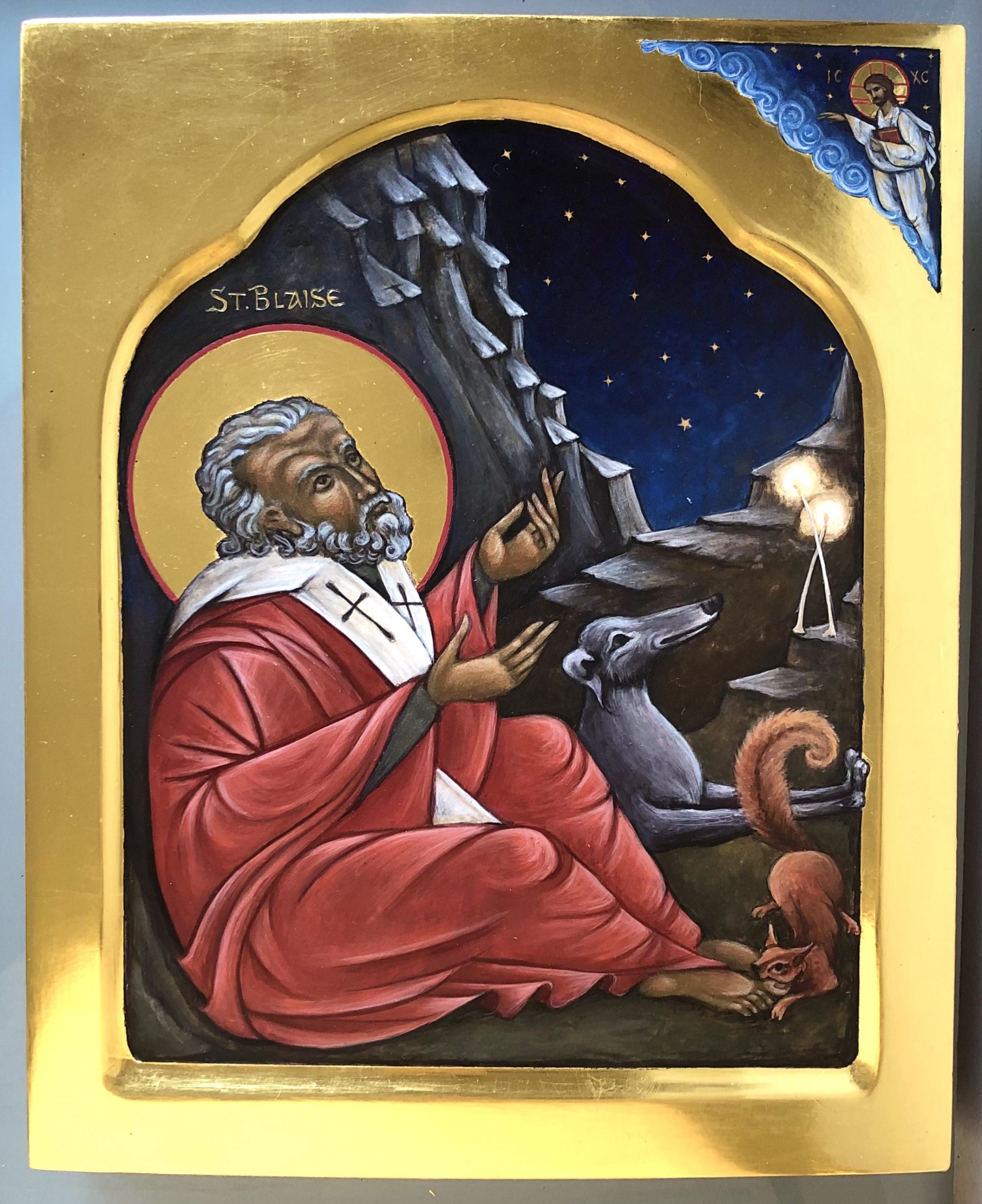The following description was written for this website by the commissioning party.

Blaise, in fear of his life, has fled to a cave in the wilderness. He was Bishop of Sebaste in Armenia sometime around the fourth century. The Roman Emperor Licinius had instigated a persecution of Christians and Blaise was in great peril. His only companions were the wild animals, who when sick or wounded, came to him for healing. By training he was a physician. In the icon we see a black hunting dog at his side and a squirrel at his feet. The icon has a Garden of Gethsemane feel, further implying that his martyrdom is near. Blaise is dressed in a red phelonion (chasuble), red the colour of blood, and on his omophorion we see two nail like crosses. His hands are held up in prayer as he asks The Lord for the strength and the courage he so desperately needs. In the top right hand corner, Christ hears his prayer and stretches out his hand bestowing his grace and blessing. His cave is lit by two wax candles and we can see through the opening the night sky and many stars.
His emblems are an iron wool comb with which he was tortured before his execution and two tapers, which we see in the icon. After his capture and on the way to prison he met a women whose pig had been seized by a wolf. Blaise scolded the wolf, who returned the pig alive to the women. Later she brought two wax tapers to light his prison cell. They also met a child who was choking on a fish bone. He was cured by the saint. Hence Blaise is one of the Fourteen Holy Helpers and is to this day, invoked for afflictions of the throat, with a rite for the Blessing of the Throat with two crossed candles being observed in many churches on his feast day (3rd February).
The icon was commissioned by a priest baptised in the St Blazey Parish Church, Cornwall. The choice of animals are his personal choice.